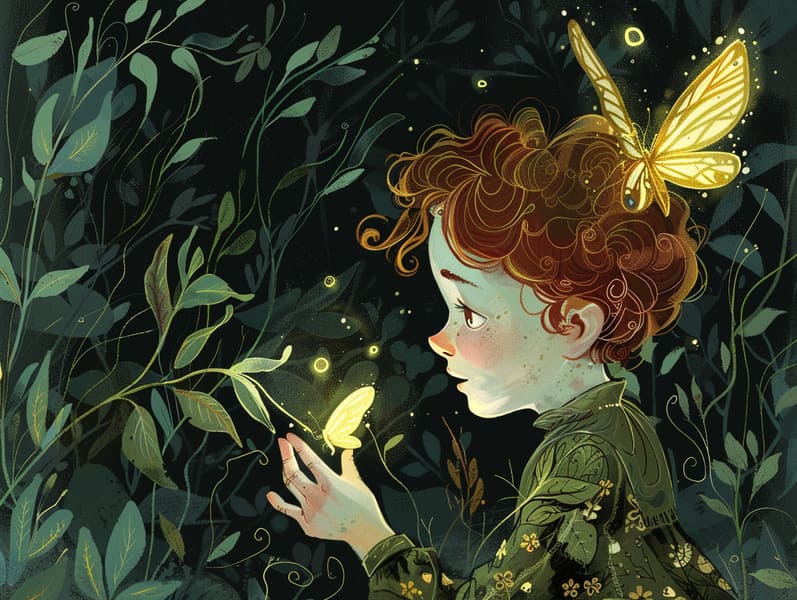
Classic fairy tales have timeless appeal. These narratives have been passed down from one generation to the next centuries before they were ever published. They arose from a variety of societies, including Eastern traditions. They were initially shared among older generations, often carrying themes and messages pertaining to the societal norms and beliefs of the time.
The renowned Brothers Grimm, the two Grimm brothers, were among the first to compile many of these beloved tales. Their anthology, "Grimm's Fairy Stories," included stories like "The True Bride," "Little Brother and Little Sister," and "The True Story of Snow White," which have since become staples in the world of traditional fairy tales. Similarly, Andersen's whimsical narratives, such as "The Little Mermaid," and "The Duckling's Story," have captivated hearts worldwide, solidifying their place in the pantheon of iconic fairy tales.
Despite being ancient, traditional fairy tales remain as pertinent as ever, especially as children's night stories. These charming stories are now available in various formats, including vividly illustrated books, delightful animations, and internet fairy tales.
Their lasting appeal can be ascribed to several fascinating points:
Significant Morals: Old fairy tales often impart important moral lessons. Narratives like "The Shepherd Boy and the Wolf" teach the value of truthfulness, while "The Story of the Tortoise and the Hare" stress the benefits of persistence and unpretentiousness. These narratives offer young ones clear distinctions between virtue and vice, forming their moral compass in a kind yet significant way.
Sympathy and Perception: Old fairy tales frequently showcase individuals facing difficulties and adversities, urging young listeners to identify with their struggles and encourage their triumphs. For instance, "The Story of Beauty and the Beast" teaches us the necessity of seeing inner beauty to appreciate the real person of a individual, fostering sympathy and insight.
Cultural Insights: Many timeless fairy tales are deeply embedded in the cultural contexts from which they bloomed. Engaging with these stories can provide intriguing perspectives into different heritages, fostering a sense of global appreciation and recognition.
Creativity and Imagination: The supernatural elements in fairy tales—magical spells—fuel children’s dreams. These narratives move readers to supernatural realms, unleashing imaginative thinking and a sense of magic that remains a lifetime.
Classic fairy tales are not only spellbinding but also didactic. They provide captivating tools in building various cognitive and affective skills in little ones. When ancient fairy tales are recited, they boost language skills by bringing new linguistic elements website and elaborate sentence structures. This practice also boosts hearing abilities and concentration, as young ones follow the story, eager to see what happens next.
Furthermore, contemplating the themes and characters of traditional fairy tales can strengthen analytical skills and analytical skills. Young ones are taught to notice patterns, guess what will happen, and figure out cause and effect. These reflections also boost children speak out their thoughts and feelings, cultivating their emotional intelligence.
In today’s high-tech era, the existence of digital fairy tales has made these stories more obtainable than ever. Websites and digital apps extend ample collections of bedtime fairy tales that can be seen or listened on anytime, anywhere. Fairy tales spoken are particularly favored, presenting an engaging way for children to savor these charming stories. Audiobooks and read-to-me stories take characters and settings to life, often augmented by captivating audio effects and melodies that boost the tale-telling adventure.
The lasting allure of old fairy tales lies in their ability to change to modern society while staying true to their central messages. Contemporary revisions of these stories often introduce more different protagonists and modern settings, making them pertinent to today’s audience. However, the essential messages of guts, charity, and truth remain unchanged, continuing to appeal to audiences of all ages.
Timeless fairy tales also offer a sense of solace and comprehensibility. They extend a ordered narrative with a unmistakable beginning, middle, and end, often closing with the termination of conflicts and the triumph of righteousness over wickedness. This reliability can be reassuring for the young, yielding a sense of steadfastness in an unstable world.
Ancient fairy tales continue to enchant and coach new generations, maintaining their radiance and meaningfulness in modern society. As nighttime stories for kids, they disclose a perfect blend of allure and teaching, developing moral values, empathy, and creativity. The existence of web-based fairy tales and the well-liked nature of fairy tales read out loud confirm that these ancient fairy tales remain attainable to new generations.
By continuing and passing on these stories, we continue to esteem the rich tapestry of legends and cultural heritage. Whether you are exploring a vibrantly illustrated book, accessing a electronic library, or listening to an sound book, the elegance of traditional fairy tales is always within reach. These tales illustrate of the enduring power of narratives and its ability to join us across epochs and places.
No matter if you are seeing a beautifully illustrated book, perusing a digital library, or listening on an read-aloud book, the loveliness of popular fairy tales is always within reach.
These fairy tales emphasize of the unending strength of storytelling and its ability to tie us across epochs and places, forging a link that fascinates and enlightens alike.
Comments on “The Origins of Online Fairy Tales and Its Unchanging Appeal.”